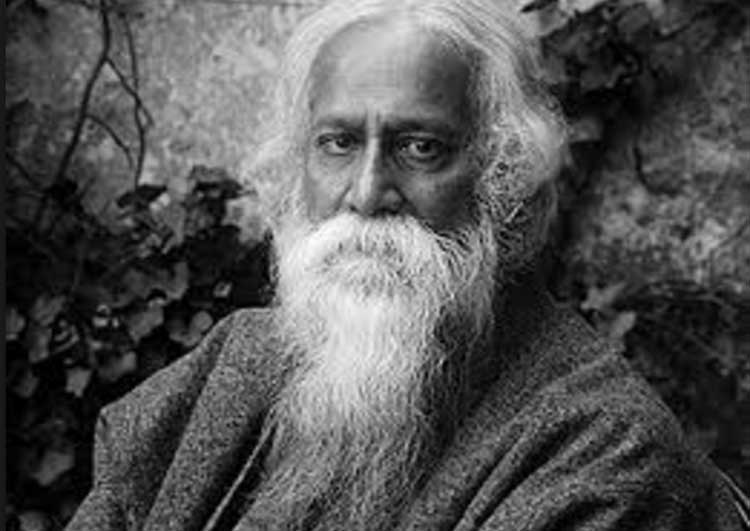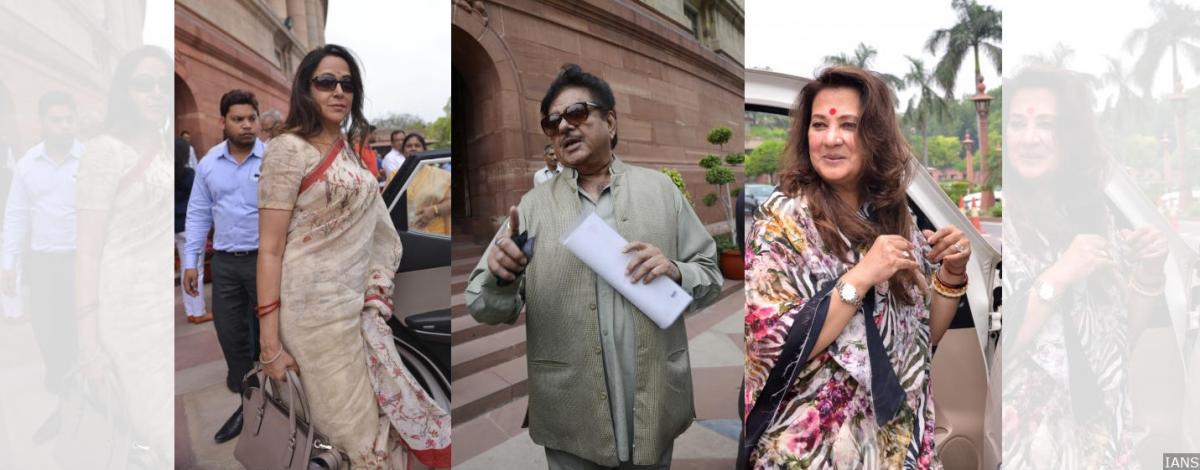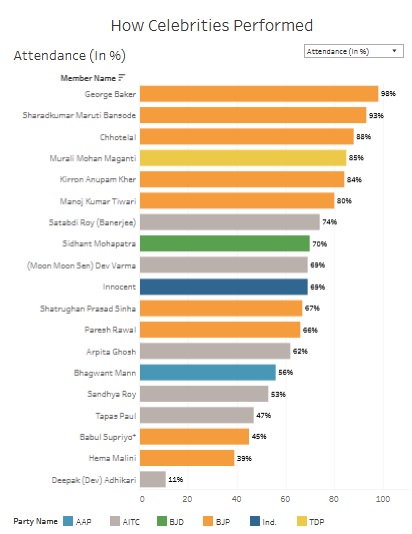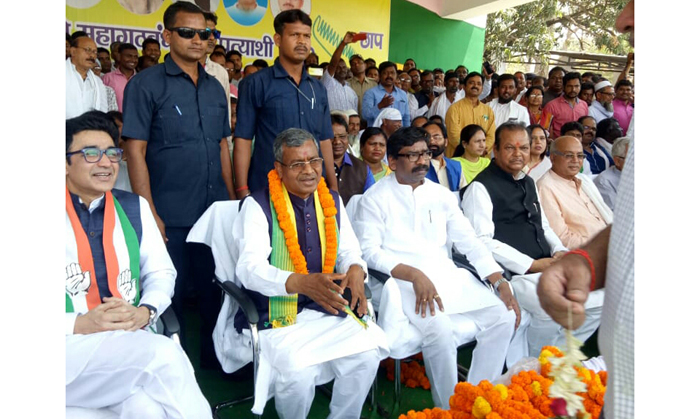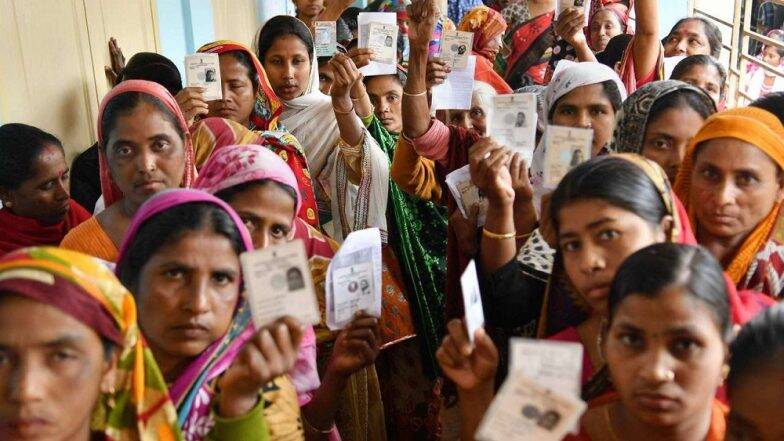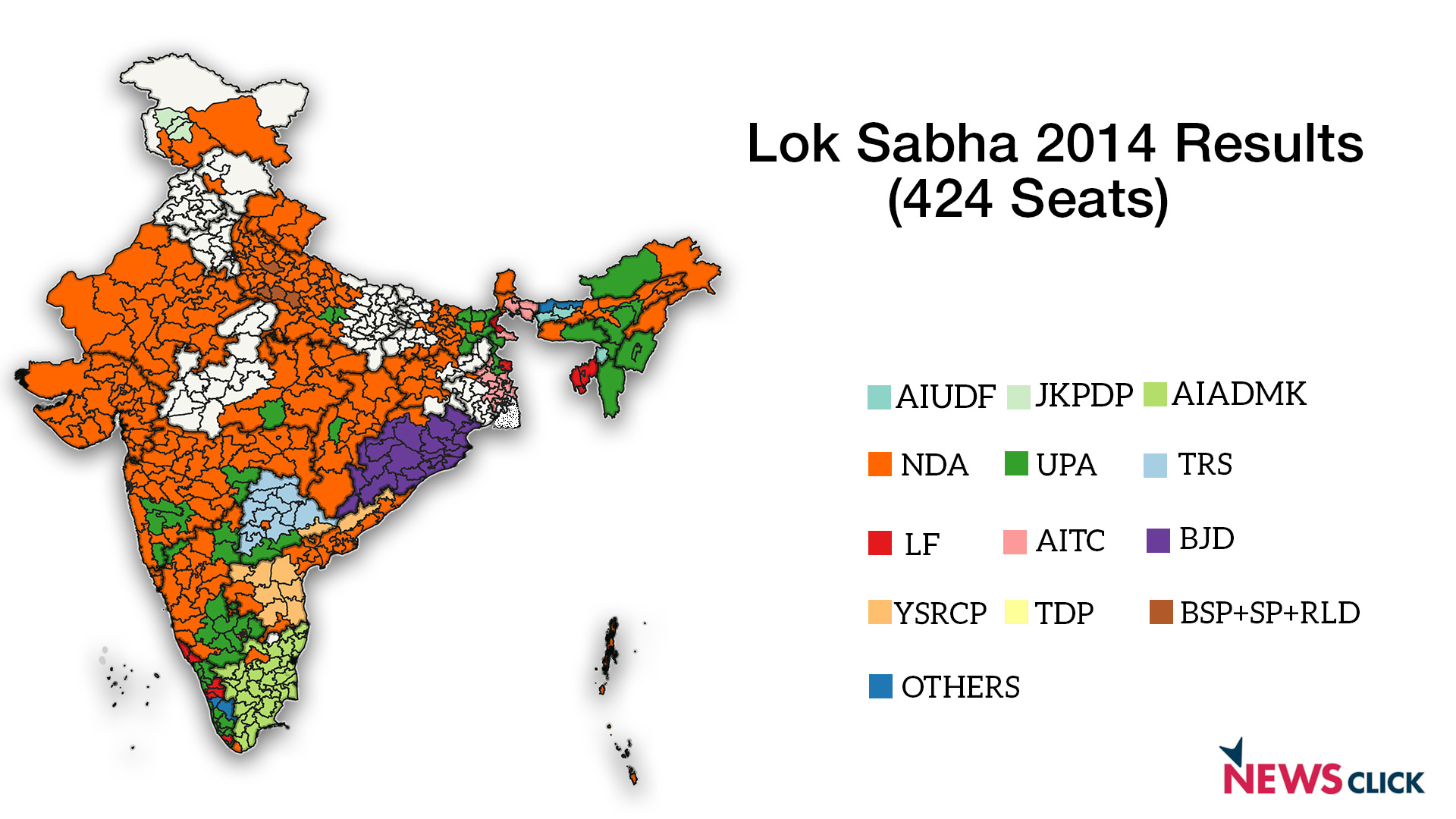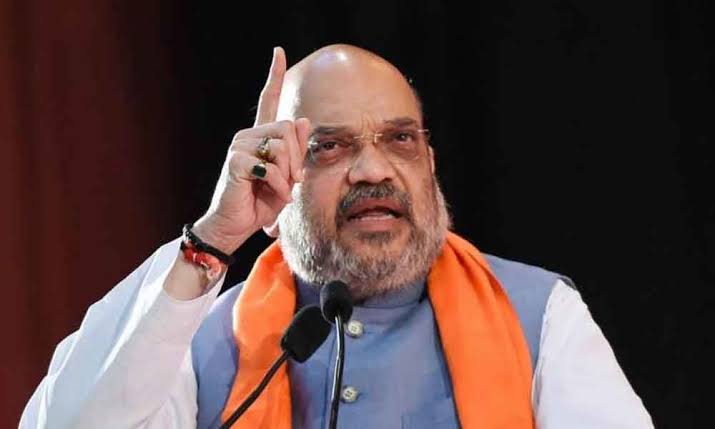Several reports in the media had highlighted the violations of prescribed menu by Akshaya Patra Foundation (APF) in supply of food under Mid-day Meals (MDM) scheme in Karnataka, by refusing to use onion and garlic in the food. Instead of standing up to the imposition of religious agenda in a public scheme, Government of Karnataka, has gone along and asked for the menu submitted by APF to be reviewed by the National Institute of Nutrition (NIN) and Central Food Technological Research Institute (CFTRI).

Based on the reports submitted by the NIN and CFTRI, the GoK has gone ahead with signing a contract with Akshaya Patra Foundation for the year 2018-19 – in spite of APF’s refusal to follow prescribed norms. The observations made and conclusions reached in these reports have provided an easy excuse to Government of Karnataka to look the other way even as APF deprives children studying in government schools of tasty and nutritious food because of its religious beliefs.
Given the serious impact on policy decision-making that these reports have had, their lack of scientific rigour raises disturbing questions about their credibility and independence. In particular, the report submitted by NIN offers unfounded and biased personal opinions as scientific claims. Without any systemic empirical study of the food being supplied by APF, NIN has reached wide-ranging conclusions, betraying an eagerness to provide clean chit to Akshaya Patra Foundation.
A detailed critique – prepare by civil society organizations and experts, coming together under the banner of Namma Aahara Namma Samskriti – of the `reports’ submitted by NIN and CFTRI with regard to the menu and other documents submitted by APF:
Point-by-Point Rebuttal to the ‘Report’ sent by National Institute of Nutrition (NIN)
Nutritional Compliance:
Claim made by NIN: “The nutritive values of menus with ingredients used in the mentioned amounts, certainly meet and often exceed the prescribed energy (Kcal) and protein requirements prescribed by MHRD for the MDM.”
Rebuttal: NIN has reached these conclusions based on just a menu sent by APF. It is obvious that a contractor could send anything without implementing any of it in practice. A scientific assessment of nutritional quality of food supplied by Akshaya Patra requires an institutional diet survey with visits to schools, proper protocols of sampling, measuring and discussions with various stakeholders at the schools being supplied. It is established that animal foods are a source of good quality proteins and are part of earlier recommendations by NIN. How does this menu ‘exceed’ prescribed standards for protein in the absence of eggs? NIN should know that sambar can be thick with plenty of vegetables or a watery gruel with hardly any vegetables – the nutritional quality of these are very different. For eg. Menu 11 has one rice based preparation without any pulses, fruits, vegetables, milk/milk products, eggs. How will this meet nutritional standards? A report based on just a paper menu can never infer anything about nutritional value of the food being supplied. This coming from a ‘scientific body’ such as NIN is shocking.
Claim made by NIN: “The micro-nutrients (calcium, magnesium, iron and zinc) are also more than what actually can be achieved through prescribed MDM menu by the government of Karnataka.”
Rebuttal: NIN has not conducted any standard scientific assessment at the schools to be able to make such assertions about the food supplied. Adequacy of micro-nutrients based on Recommended Daily Allowances cannot be calculated based on menu. It would require details of the raw ingredients used, the quantities, the number of children of different age groups who ate the meal, the wastage and leftovers. If 100 gm of vegetables or 100 gm of oil are added into a sambar, it is important to estimate if this was used to feed 10 children or 100 children. Without even looking at these factors, how does NIN say that the food is meeting requirements ‘more’ than what is prescribed?
Bio-availability:
Claim made by NIN: “With regard to the bio-availability of minerals, it is well established that inclusion of seasonal and fresh vegetables and the use of turmeric, lime, curry leaves, cumin seeds, tamarind, green leafy vegetables also improve the bio-availability of nutrients apart from additional health benefits and are also effective substitutes of onion & garlic. The use of variety of fresh vegetables and above ingredients by Akshaya Patra ensures absorption and bio-availability of mineral and nutrients.”
Rebuttal: A study by CFTRI shows that onion and garlic improve the bio-availability of zinc and iron from cooked food, especially as bio-availability of iron and zinc from plant foods is usually very low. No scientific evidence is provided in the report submitted by NIN to substantiate claims that the suggested alternative ingredients also enhance bio-availability. In fact, contrary to the claims made here, studies show that green leafy vegetables (GLV) have high fibre content (oxalates and phytates) which inhibit iron and zinc absorption. Most of these ingredients are expensive/seasonal as compared to onions and garlic which are available throughout the year. More importantly, inclusion of onions and garlic is a culturally appropriate practice and imparts taste to food which children like and therefore eat more of. Bioavailability of nutrients from plant foods are generally lower than from animal sources.
Food Safety Measures:
Claim made by NIN: “Akshaya patra kitchens are ISO certified which meals a certain standards are already met. In addition, some of our scientists who visited their kitchens in Telangana and Karnataka have given convincing personal accounts about the high safety standards practiced by the organisation”.
Rebuttal: When the Joint director, MDM, Karnataka has officially requested for a report on the functioning of a centralised kitchen that serves MDM to thousands of children, the director of NIN responds by talking about ‘personal accounts’ of scientists. What locus standi does a personal account have for an issue of such serious concern as children’s nutrition? The director should have asked for a formal visit and issued a formal report or said that she would not be able to comment. This need to bend over backwards to accommodate a contractor when concerns have been raised by a government official who the contractor is accountable to, is deeply concerning. Additionally, in case of food cooked in centralized kitchens and transported to schools which are in some cases 20 km away, the assessment of food safety has to be at the point of consumption and not at the point of preparation alone. This points seems to be have been completely lost on NIN.
Meal Diversity:
Claim made by NIN: “Akshaya Patra Foundation provides varied meal combinations of local dishes. This enhances MDM consumption and also aids the sensory development of child.”
Rebuttal: The claim that meals provided by APF enhances MDM consumption is not borne out by evidence. The Karnataka State Food Commission has noted the lower consumption of food supplied by APF. In 2013, Bengaluru (Urban) and Dharwad, where APF was the biggest supplier of mid-day meals, were designated as special focus district due to “poor-utilization of foodgrains and low coverage of children”. As per the data submitted by Government of Karnataka to Programme Approval Board (PAB) for year 2017-18, Bengaluru (Urban) and Dharwad remain the worst performing districts in the whole State. There is absolutely no empirical basis for NIN to reach the conclusion that food supplied by APF aids the sensory development of child. When children are refusing to eat the food because it is bland and tasteless, where does the question of ‘sensory development’ come in?
Claim made by NIN: “Akshaya Patra Foundation’s nutrition team has designed multiple variants of sambar and rice which are rotated on a periodic basis to add variety. The resultant difference in its palatability adds variety to the organization’s mid-day meals. The cyclical menu plans and the ingredients used by Akshaya Patra in fact ensure diet diversity needed for the meal.”
Rebuttal: Diet diversity means that different food groups are represented on the menu. When meat/eggs and fresh fruits/vegetables figure nowhere on the menu, how does NIN reach the conclusion that dietary diversity has been ensured?
Sambar is one type of food and figures in 10 out of 18 menus shared by APF. How does ‘multiple variants’ of sambar constitute variety? Variety would mean different sources of carbohydrates, protein, minerals and vitamins.
In fact, NIN has completely distorted the scientific meaning of the term diet diversity. Diet diversity has to be over a reference period of time to assess if different food groups have been used to prepare the meal on different days. It would also require a visit to the kitchen to see what ingredients are available to be used on different days. Are there different kinds of vegetables, cereals, pulses, fruits? If the same food ingredients are used in different ways (eg ’10 varieties’ of sambar), it doesn’t constitute diet diversity.
Onions and garlic are particularly important to make traditional sambars. Even these are not used by APF. It only means that the same monotonous bland food is being served on most of the days – an issue rightly raised by the JD, MDM and Food Commission. A balanced meal requires that different food groups are rotated in the right proportions so children can get their nutrition from multiple sources.
Meal Taste:
Claim made by NIN: “Although, the meal taste is very specific to local palate, the menus with considerable diversity in variety, usage of different food groups, spices and seasonal vegetables certainly cannot give rise to any monotony in taste.”
Rebuttal: These conclusions reached by NIN without even visiting the kitchen of APF, leave alone the schools, are cause for deep concern. It is particularly important that they should have spoken to the key stakeholders – the children to ask them if they found the food monotonous.
These claims made by NIN about the meal taste are another arm-chair observation without any empirical data or observations of actual food being supplied.
Conclusion:
Claim made by NIN: “Akshaya patra Foundation is implementing in compliance with MDM norms. The menu follows the nutrition guidelines suggested by MHRD”.
Rebuttal: As stated above, NIN has no basis to certify compliance with nutritional guidelines since they have not collected any data to be able to assess this. In absence of such evidence, this is just the personal opinion of the Director, NIN without any scientific basis, and should be treated as such.
Claim made by NIN: “The recipes are found to be inspired by local food habits and menu combination”.
Rebuttal: APF serves the same centrally prepared food to 2,814 schools and that too based on a ‘sattvik’ diet. How can this be inspired by local food habits? Does this mean that majority of communities eat ‘sattvik‘ food? Onion and garlic are part of the local food habits. Similarly a majority of children in government schools enjoy eggs and attendance has been documented to increase on the days that eggs are provided in the MDM. When these are being denied to children because of religious beliefs of APF how can they also claim to have taken local food habits into consideration and more importantly how can NIN accept this and agree with it?
Claim made by NIN: “Quality and hygiene are strong aspects of Akshaya patra program and are maintained throughout the implementation process”.
Rebuttal: How did the Director, NIN reach these conclusions sitting in Hyderabad? Several schools to which Akshaya Patra food is being supplied are over 20 kms away from the centralized kitchen. Food prepared early in morning with ingredients prepared overnight reaches children at 12-12:30 pm after a delay of 3-4 hours. Since the food is not freshly cooked and has been kept artificially hot under closed containers, the quality of food is known to deteriorate. The rice for example becomes mushy and looses integrity. These are common observations that everyone from children, school teachers and officials are aware of. But NIN has concluded otherwise based on arm-chair observations without visiting any schools. Given that incidents of students vomiting after eating food APF food have been reported in the media, shouldn’t a responsible scientific institutions like NIN at least visit the school premises where this food is being consumed, before, certifying the quality and hygiene of food eaten by lakhs of children?
>> From the point-by-point rebuttal provided above, a pattern emerges wherein claims are made without any systematic empirical data being collected and biased personal opinions are passed off as scientific truths. While CFTRI in its report has answered questions of whether the Akshaya Patra food is “diverse, tasty, spice and not monotonous” by acknowledging that “It is difficult to comment on various attributes without having the sufficient data available with us”, NIN seems to be overly keen to validate claims of APF. Some of the lapses in the report are too obvious and apparent to common sense that they can’t be treated as just oversights and raise serious questions over the credibility and independence of NIN. In absence of any data or systematic study, the willingness of the institutions to offer opinions seriously undermines its credibility.
Point-by-Point Response to the ‘Report’ sent by Central Food Technological Research Institute (CFTRI)
Question posed by JD (MDM): The contribution of onion and garlic to macro and micro nutrients is negligible
Comment by CFTRI: We agree to the points that Onion and garlic contribution towards macro and micro nutrients is negligible.
Rebuttal: The comment by CFTRI contradicts its own study which shows that onion and garlic improve the bio-availability of zinc and iron from cooked food. This is of significance because of the high prevalence of anemia and diarrhea in Karnataka which can be reduced with iron and zinc respectively. Bio-availability of iron and zinc from plant foods is usually very low and even those plant foods that increase bioavailability are being denied to the children.
Question posed by JD (MDM): Excellent alternatives for onion and garlic
Comment by CFTRI: CFTRI Team agrees to the alternatives listed as a substitute for onion and garlic. The ingredients listed (viz turmeric, drum stick, lime, green leafy vegetables- GLV, jeera etc) are known for enhancing the bio-accessibility of micronutrients. These are not only excellent promoters of bioavailability but also providers of nutrients. Acidulants which provide organic acids such as citric acid, scorbic acid, maleic acid are the best enhancers of bioaccessibility.
Rebuttal: CFTRI provides no scientific basis to substantiate claims that the suggested alternative ingredients also enhance bio-availability. In fact, contrary to the claims made, studies have shown that green leafy vegetables (GLV) have high fibre (oxalates and phytates) which inhibit iron and zinc absorption, so at least this claim by CFTRI is false. Moreover, most of these ingredients are expensive/seasonal as compared to onion and garlic which are available throughout the year. More importantly, inclusion of onions and garlic is a culturally appropriate practice and imparts taste to food which children like and thus consume with interest.
>> We are in agreement with rest of the comments made by CSIR-CFTRI team which indicate that assessments of nutritional adequacy, meal diversity and taste, food safety etc. cannot be made without a systematic study based on collection, testing and analysis of samples of actual cooked food. Clearly, NIN has made its observations and conclusions in absence of such as study and thus it cannot be made a basis for any policy measures by the Government of Karnataka.
Courtesy: Counter View

